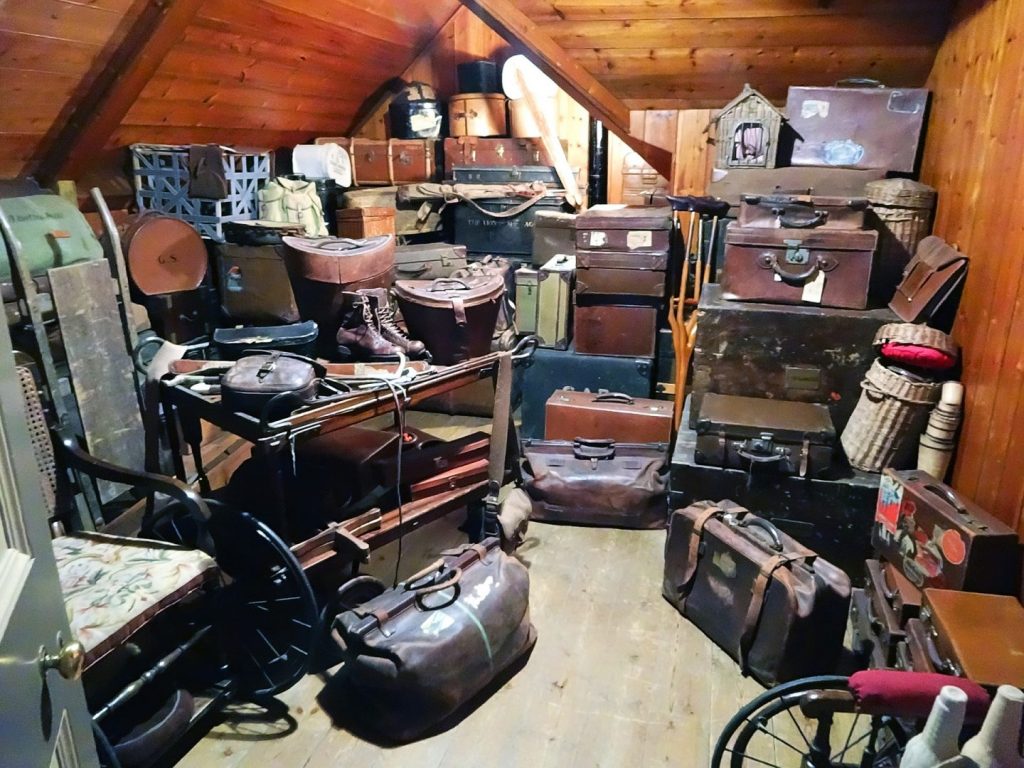
Attics, basements, closets, spare rooms, garages, and sheds may have items in them that we have forgotten we even have
This is the perfect time of year to begin looking into one of the most troubling habits that people have – holding onto to too much stuff. People don’t like to hear that they have not been as diligent as they should have been in letting go of some of the many things they have been holding onto over the years. This is a very sensitive subject, but’s it’s an important one to look at every so often.
We are not pointing any fingers here but simply noting that having a safe and accessible home is accomplished more easily when there are fewer things in the way or taking up valuable storage space that could be utilized by more current items. Who’s to say what is to keep and retain except the person holding onto the items? Similarly, who’s to say that someone has too much stuff? We might make that determination as an outsider, but ultimately, the person that is struggling to find a place for everything or having mobility issues because their stuff has filled up passageways and it now is a threat to their personal safety needs to come to the conclusion that they need to start cutting back on what they have.
This is the perfect time of year to have this discussion because people want to have their homes as neat and presentable as possible for their visiting family members, and guests who be coming during the next few weeks to celebrate the holidays with them. Also, they likely want to pare back a little on what accompanies them into the new year.
We know how easy it is to accumulate items. We start off innocently enough by hanging onto a ticket stub or a printed program from an event we attended and put it in a box or drawer. Then, over time, we add more and more to what we have begun collecting because the original items are now buried under newer items. Before long, we have lost track of where we have certain items and may not even remember some of the items we now own. We find that it’s easier to put something like spare change, a leftover screw or bolt to a project or repair we were working on, a can of paint that we hang onto in case we need to touch up a place where we have used it, a piece of string, a twist-tie, instructions or registration papers from something we purchased, and similar items into a drawer, on a shelf, or some container that to admit that we may never need this item again and toss it at the time.
We hang onto the original packaging for small appliances, toys, tools, technology items, and other things we purchase in case we need to return it within the time allotted for us to change our minds or to return it to the store or manufacturer if it breaks or needs warranty repairs, and we never go back to toss them after we no longer need them.
We hold onto items that have passed their prime and may not have any value to us or anyone else anymore, but we have them anyway – dated clothing (like bellbottom pants, paisley prints, wide or narrow lapels, leisure suits, double knits, or something that we obviously wore when we were much younger), technology items (8-track tapes, cassette tapes, and even CDs as well as their players although phonograph records are coming back into style – if we remember where we put them), and sporting goods (older equipment that no one uses anymore, apparel that clearly is out of style, and items that no longer are acceptable within the rules of that particular sport). We have broken or questionable tools and small appliances. We have accessories for a vehicle or boat we don’t even own anymore. The list is quite extensive.
The point is that we all fit this description – some more than others. Therefore, as aging in place specialists, we must approach this topic with compassion and empathy. We have been there – possibly as much or more than some of our clients, possibly not as much. Nevertheless, we know how easy it is to accumulate items even when that was not our intent initially. Then add to that the items we meant to hold onto, and the collection grows rapidly.
We have included ourselves in this discussion, as well as our clients, because this is a far-reaching issue. As we begin to deal what our own homes and experience what it’s like to start eliminating some of the unnecessary items we have sitting around, we can begin helping our clients to streamline their homes – for the holidays and for the new year.
